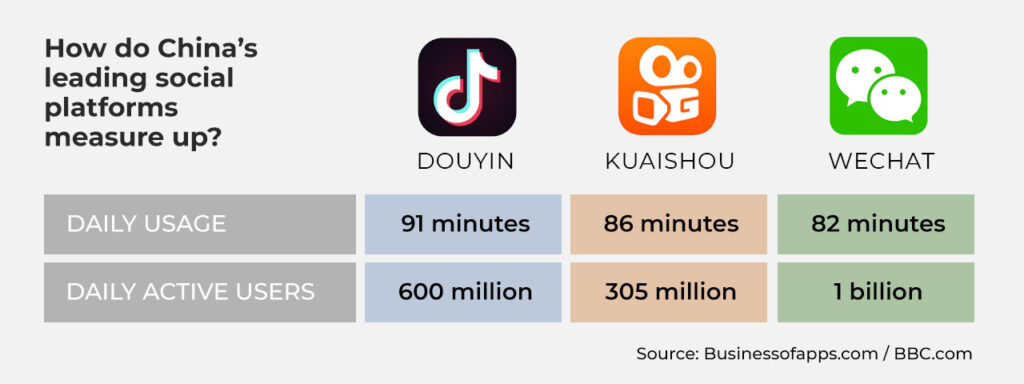Jing Culture & Commerce’s Decoded series presents guides and insights into Chinese social media platforms. Discover more here.
WeChat may be China’s dominant multifunctional app, but in early 2020, founder Allen Zhang publicly offered a shortcoming: platforming short-form content. After capturing China’s social messaging market by the mid-2010s (thereby making text messages redundant), Tencent made WeChat Pay ubiquitous (goodbye cash), a move that laid the ground for Mini Programs, non-downloadable applets, to disrupt China’s technology and e-commerce landscapes.
Tencent’s signature product is a closed system, meaning users only see content from those they follow, and therefore is not conducive to supporting viral content. The rise of short-form platforms that thrive on generating viral content through openness, such as Douyin, known internationally as TikTok, and Kuaishou, pushed the company to release WeChat Channels, a first step to answering the quandary posed by Zhang.

China’s most popular multi-functional social app, WeChat plays host to one billion daily active users and accounts for 34% of the country’s total data traffic.
What is WeChat Channels?
An open stream of videos and images first introduced by Tencent in early 2020 — think full-screen, short videos, infinite scroll.
Channels is accessed through WeChat’s “Discover” section, and allows both personal and official accounts to post the following; short video (up to one minute), long video (up to 30 minutes), or pictures (up to nine images).
WeChat offers users video feeds from four sources: followed accounts, content “liked” by contacts, trending content, and location-based “local” content.

Accessible through the “Discover” section, WeChat Channels offers users a feed of videos and visuals from different sources including followed accounts and trending content.
How do existing accounts join WeChat Channels?
Official accounts must create a second alias specifically for Channels. Next, accounts apply for a “Blue Verification Badge.”
What functions does WeChat Channels offer?
Channels provides basic video editing tools allowing users to add thumbnails, hashtags, emojis, text, and background music.
In addition, WeChat Channels platforms livestreams and allows accounts to incorporate a WeChat Mini Shop. These functions connect with China’s dominant digital trend in 2020: livestreaming e-commerce. Purchase links to Mini Shops can be embedded into videos and offered in livestreams to sell products in real time.
The goal is to allow accounts to reach larger audiences through becoming what Tencent terms a “social business card.”
Which cultural destinations are on WeChat Channels?
At present, a range of Chinese cultural institutions have opened WeChat Channels accounts including the Forbidden City, Shanghai’s Power Station of Art, Red Brick Art Museum, and Sanxingdui Museum.
At the time of writing, the Art Institute of Chicago is the only non-Chinese museum to have opened a WeChat Channels account.
The future of WeChat Channels
The primacy of short-video in China’s media ecosystem is here to stay. Tencent’s previous efforts to remedy its deficiencies in this space failed to counter leading short-video apps — from the Vine-esque Weishi to the in-app Kanyikan feature created with Kuaishou. Tencent sees platforming popular video content as key to becoming an all-in-one marketing tool connecting brands and its more than a billion users. With this in mind, the Shenzhen-based company seems unlikely to give up on Channels.
WeChat is the most widely adopted social media platform by international organizations looking to engage Chinese audiences — as such, it’s wise to utilize its full range of tools. For cultural institutions already producing short-video content for other apps, uploading onto China’s most used social platform would seem a logical, risk-free step.



